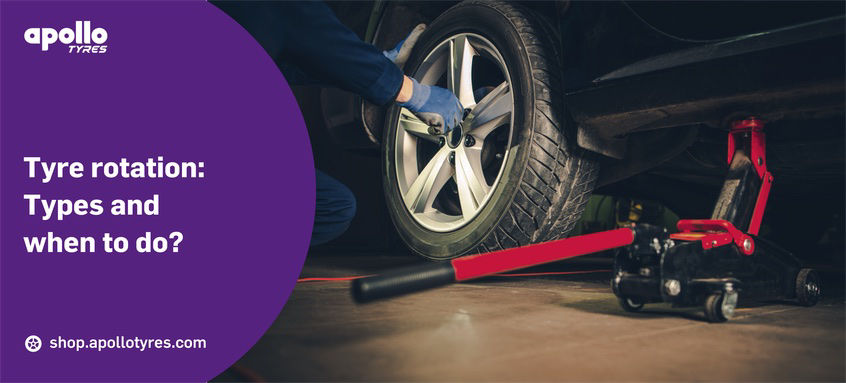
Car maintenance is an essential aspect of owning a vehicle, ensuring its longevity and optimal performance. One crucial but often overlooked aspect of car maintenance is tyre rotation. Tyre rotation involves moving the tyres from one position on the car to another, promoting even wear and extending the lifespan of your tyres. In this article, we will delve into the importance of car tyre rotation, different rotating patterns, and why it matters for your vehicle's overall health and your safety on the road.
Understanding Tyre Rotation
Tyre rotation is the process of changing the position of each tyre on your car, ensuring that they wear evenly. Tyres tend to wear differently based on their location on the vehicle. For instance, front tyres usually wear out faster than rear tyres due to the weight of the engine and the constant turning motion. By rotating your tyres at regular intervals, you can ensure a balanced wear pattern, maximizing their lifespan and enhancing your car's overall performance.
The Importance of Tyre Rotation in Cars
Extended Tyre Lifespan:
Regular tyre rotation helps in achieving uniform wear, preventing premature wear on specific tyres. This prolongs the lifespan of your tyres, saving you money in the long run.
Improved Fuel Efficiency:
Unevenly worn tyres can lead to decreased fuel efficiency. Properly rotated tyres ensure that your car's engine doesn't have to work harder, leading to improved gas mileage and saving you money on fuel costs.
Enhanced Handling and Safety:
Evenly worn tyres provide better traction and handling, especially during adverse weather conditions. This ensures your car responds predictably to your steering and braking inputs, enhancing overall safety on the road.
Prevention of Irregular Wear:
Tyre rotation helps prevent irregular wear patterns, such as cupping or feathering, which can lead to uncomfortable rides and noisy driving experiences.
Types of Tyre Rotation Patterns
There are several tyre rotation patterns, each designed to address specific wear patterns and maximize the lifespan of your tyres. The most common rotation patterns include:
Forward Cross Tyre Rotation:
In this pattern, the front tyres are moved straight back, and the rear tyres are crossed to the front. This method is suitable for vehicles with non-directional tyres and promotes even wear.
Rearward Cross Tyre Rotation:
This pattern is the reverse of the forward cross, where the rear tyres are moved straight back, and the front tyres are crossed to the back. Like the forward cross, this method ensures uniform wear and is suitable for non-directional tyres.
X-Pattern Tyre Rotation:
In the X-pattern rotation, the front and rear tyres are exchanged diagonally. For example, the front-left tyre is moved to the rear-right position, and vice versa. This method is often used for performance or directional tyres, ensuring even wear.
Side-to-Side Rotation:
Side-to-side rotation involves swapping the tyres on the same axle. The front-left tyre moves to the front-right position, and the same applies to the rear tyres. This pattern is suitable for vehicles with different-sized tyres on the front and rear axles.
5-Tyre Rotation:
This rotation pattern is applicable for vehicles equipped with a full-size spare tyre. All five tyres are rotated in a specific sequence, ensuring even wear on all tyres, including the spare.
When and How Often Should You Rotate Your Tyres?
The frequency of tyre rotation depends on various factors, such as your driving habits, the type of tyres you have, and the manufacturer's recommendations. As a general rule of thumb, it's advisable to rotate your tyres every 6,000 to 8,000 miles (9,600 to 12,800 kilometers). However, it's crucial to check your vehicle's manual for specific guidelines, as some manufacturers may have different recommendations.
If you notice uneven wear, vibrations, or your vehicle pulling to one side, it's essential to have your tyres inspected and rotated promptly. Additionally, if you've recently replaced one or two tyres, it's a good practice to rotate them to ensure even wear across all tyres.
Conclusion
In conclusion, tyre rotation is a fundamental aspect of car maintenance that significantly impacts your vehicle's performance, safety, and your wallet. By following the recommended rotation patterns and scheduling regular tyre rotations, you can ensure even wear, extend the lifespan of your tyres, improve fuel efficiency, enhance handling, and promote overall safety on the road. Don't overlook the importance of tyre rotation; it's a simple yet effective way to maximize your investment in tyres and keep your car running smoothly for years to come.

